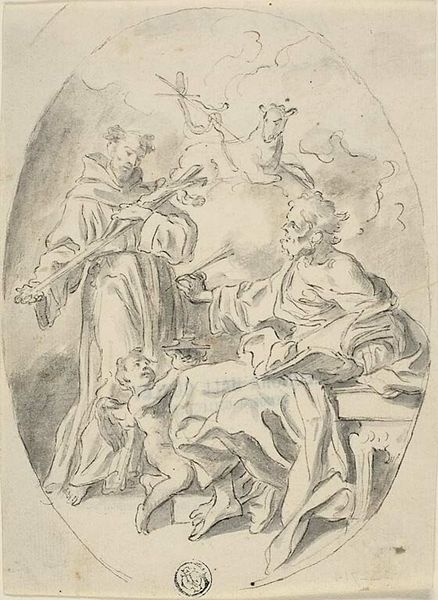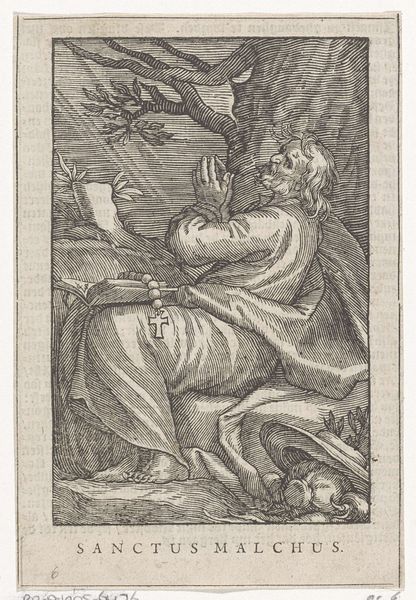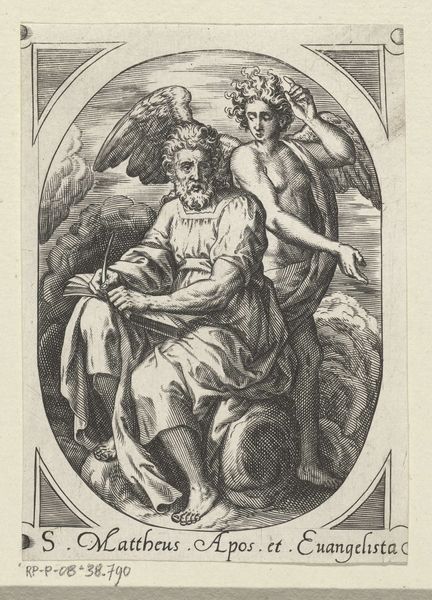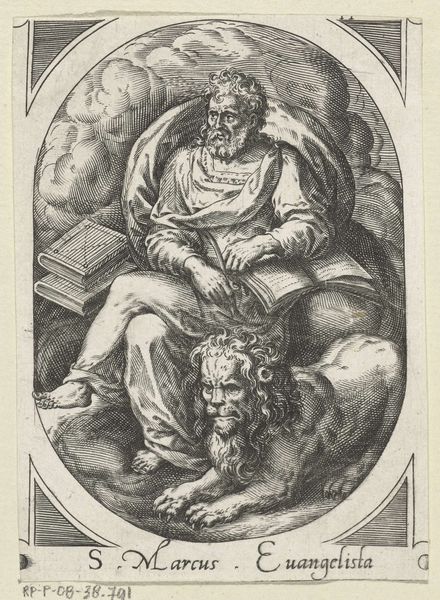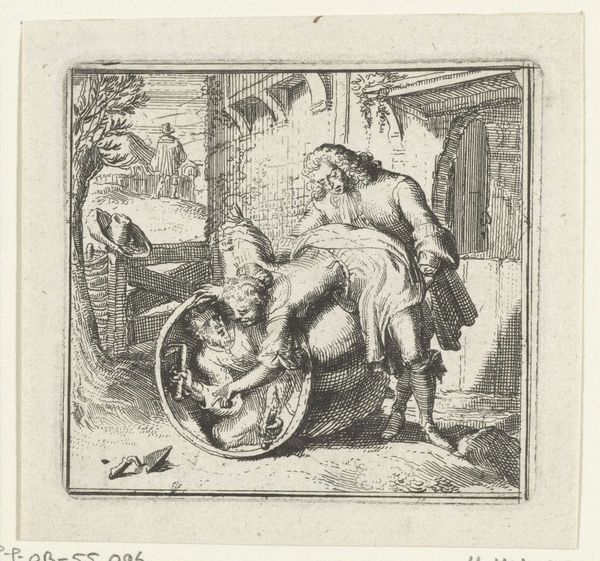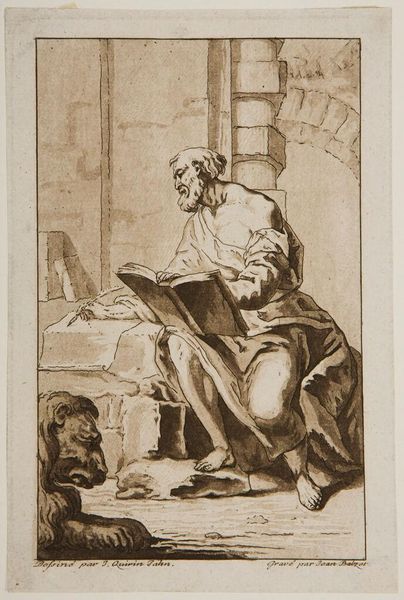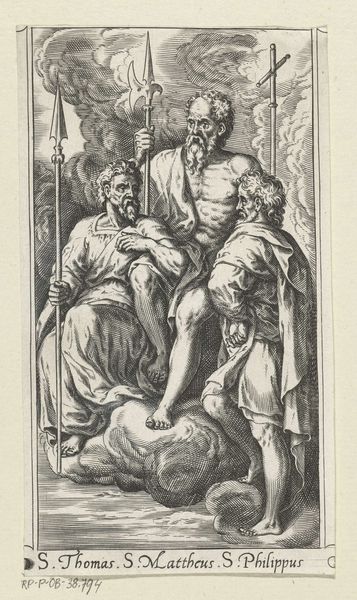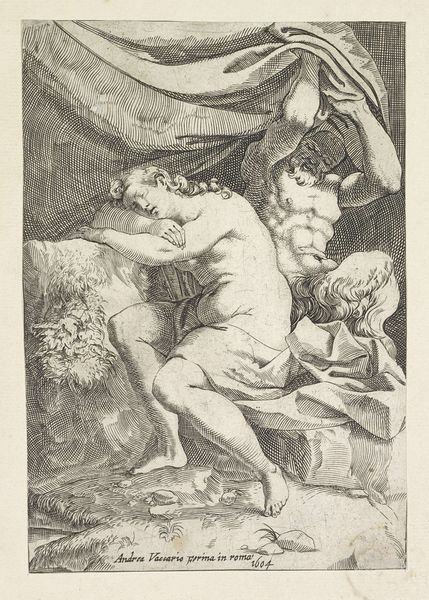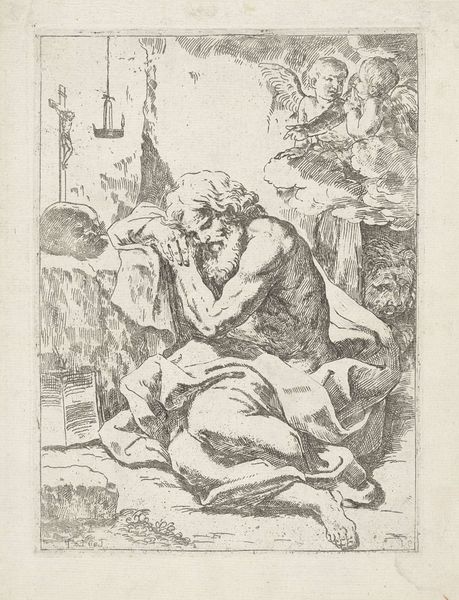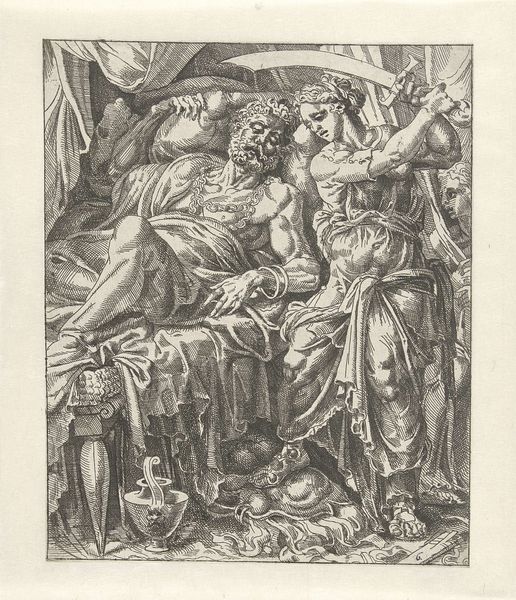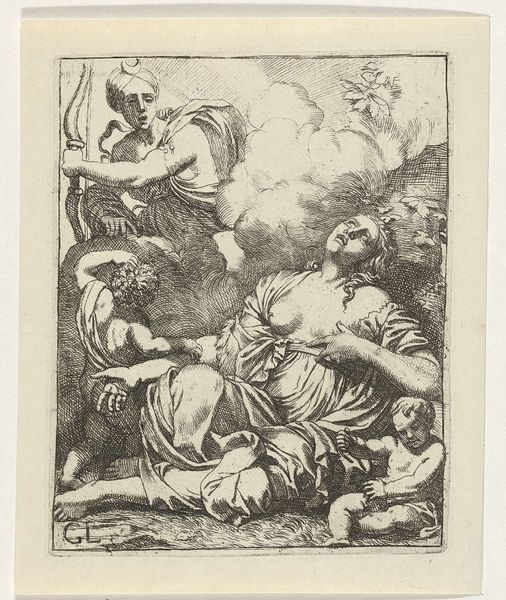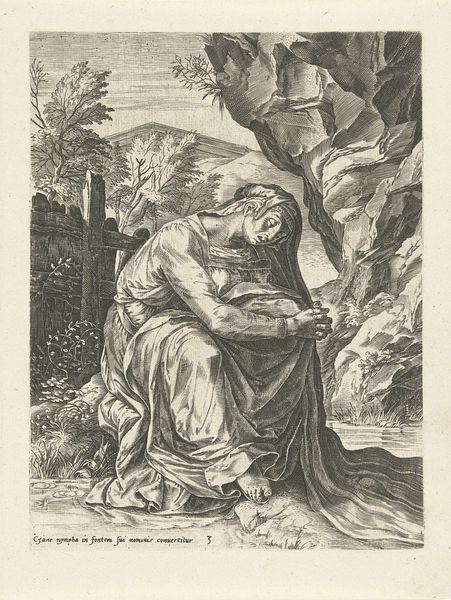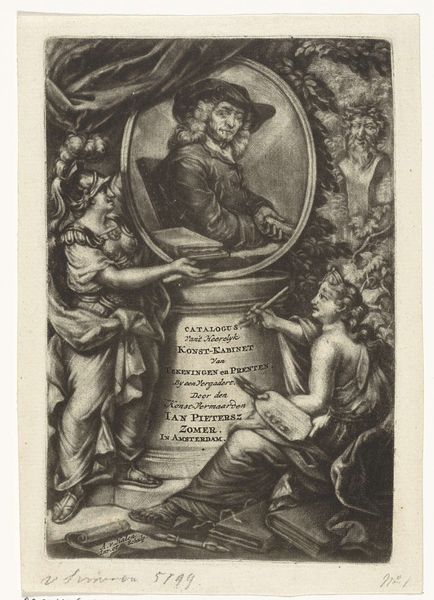
drawing, print, paper, ink, engraving
portrait
drawing
byzantine-art
medieval
narrative-art
pen illustration
old engraving style
figuration
paper
ink
pen-ink sketch
sketchbook drawing
history-painting
engraving
Dimensions: height 123 mm, width 86 mm
Copyright: Rijks Museum: Open Domain
Editor: This is "Saint Luke with an Ox," an engraving made between 1534 and 1640 by an anonymous artist. It's currently held at the Rijksmuseum. I'm immediately struck by the intricate detail of the lines. The composition seems almost otherworldly, with Saint Luke writing amongst the clouds with an ox right by his side. How would you interpret this piece? Curator: Well, consider this image as a product of its time. During the late medieval and early Renaissance periods, visual culture played a crucial role in shaping religious identities and reinforcing societal hierarchies. Saint Luke, as an evangelist, is here being depicted as a powerful figure, divinely inspired, which is emphasized by the ox. Editor: The ox, right! Isn’t that a symbol? Curator: Exactly. It's Luke’s traditional attribute. Now, the interesting part is how this symbolism was used to negotiate power dynamics. Notice how Luke is actively writing? What does that signify to you? Editor: I guess that he is spreading the gospel. The act of writing itself gives him authority. Curator: Precisely. The engraving, in its distribution, then amplifies this authority, disseminating the image of Luke and the Gospel to a broader audience, thus influencing their beliefs and reinforcing the Church's message. The clouds contribute, too, of course. Editor: So, it’s not just a portrait but a statement about power, belief, and how images were used to shape those things? Curator: Absolutely! It is about understanding how visual representations like this one functioned within complex social and religious structures, subtly guiding perceptions and behaviors. Considering who the patrons were for this print and how it was disseminated, could provide additional insight into how it was intended to shape the religious landscape. Editor: That’s fascinating. I’ll definitely look into that! I see so much more than just a simple religious scene now. Curator: Indeed. It's in exploring those connections that art history truly comes alive, encouraging us to question the narratives we've inherited.
Comments
No comments
Be the first to comment and join the conversation on the ultimate creative platform.
